| Please access the following URL if you want to secure using SSL. All pages in the site will be secure pages. |
| https://secure02.blue.shared-server.net/www.fish-food.co.jp/message english 7.2020.html |
Welcome to FISH FOOD TIMES
Jul. 2020 issue No.199

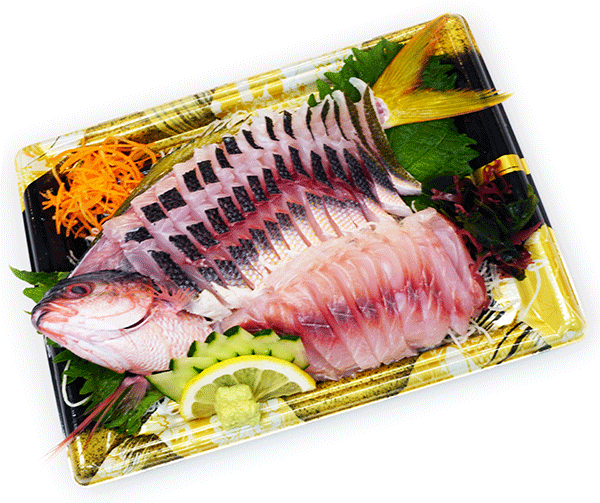
Gurukun figure sashimi
Okinawa, the southern island
In June, I visited Okinawa for the first time in 3 months. My work in Okinawa, which I have visited every month for 13 years since the spring of 2008, has been canceled for two months, April and May, due to the declaration of a new coronavirus emergency.
When I visited Okinawa after the rainy season, it was the best season for summer. Especially in July and August, the temperature of the mainland is often hit by extreme heat from 35℃ to 40℃, but in Okinawa, the temperature does not almost reach 40℃, and there is almost no difference in temperature from the mainland. The sea breeze peculiar to the island is comfortable on the skin, and I feel that Okinawa in the south is easier to spend than the summer inland on the mainland in the north.
On the contrary, I think spring is the most difficult time to spend in Okinawa. In spring in Okinawa, there are many cloudy days, and it is not uncommon for temperatures to exceed 30°C. If I visit Okinawa at a time when the temperature of the mainland may drop below 20℃ in spring, will be exposed to a large temperature difference of 10℃ to 15℃. When I return from Okinawa, where I usually stay for 4 days, to the cold mainland, I sometimes feel sick in the spring when there is a large temperature difference.
The author visited not only Okinawa but also the Nansei Islands such as Amami Oshima, Tokunoshima, and Kikaijima for a total of about 10 years, but now I am no longer working in the Nansei Islands. In other words, I have been working as a fish consultant for a total of 22 years in Okinawa and the Nansei Islands, so as a human being living on the mainland, I am proud that I have been treated many fish that live in the southern seas , and at the same time,
I have tasted them with my tongue like no other.
However, there are so many kinds of fish living in the southern sea, and even if I have many chances to come in contact with the fish in the southern sea for such a long time, I am still struggling to remember the names of many fish. And since they have very similar siblings to each other, it is often not possible to clearly distinguish between these differences.
gurukun
For example, Gurukun in the intro image. In Okinawa, this gurukun is called Akaju Gurukun, and is classified as Perciformes order Percoidei suborder Caicionidae family Pterocaecio genus Paracaesio xanthura.

The image below shows the gurukun that was purchased at the same time when this fish was treated.

This fish is called Ukuglukun. Classification is Perciformes order Percoidei suborder Caicionidae family Pterocaesio Bleeker genus Pterocaesio tile.
Next is Gurukun, the original Japanese name Takasago. The classification is Perciformes order Percoidei suborder Caicionidae family Pterocaesio Bleeker genus Pterocaesio digramma, and it is called Kabukuwaglukun in Okinawa. The funny thing is that the double-lined fusilier belongs to the Pterocaesio Bleeker genus, not the Caesio Lacepède genus.

The author had a hard time not knowing the difference between Ukugurkun and Kabukuwargurkun at first. To make matters more complicated, there is a fake double-lined fusilier called "Kabukuwagurukun", which is very difficult to distinguish. A thin line running vertically through the fish body separates from the thick line, and this line is below the double-lined fusilier. And it is a fake double-lined fusilier that seems to have a side line and a line sticking to each other, but it is "easy to say, difficult to distinguish".
It was surprising that the fisheries officials in Okinawa and Amami could easily identify these things. After all, it is necessary to systematically grasp and distinguish the features in order to distinguish them properly, but the classification of Gurukun (Caecionidae family) written by Mr. Taketoshi Sakumoto of the Graduate School of Science and Engineering of the University of the Ryukyus in the Okinawa Prefectural Marine Technology Center are categorized as follows.
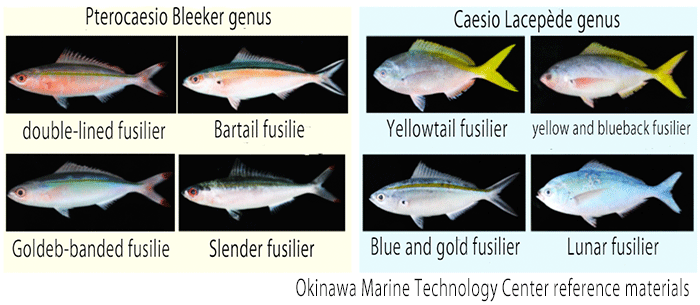
According to this material, Gurukun companions have 10 species of 4genus, which are relatively small fish and can be up to 30 cm even if they are large. It has a relatively long life of about 15 years, and some of them live 30 years. The spawning season is from early summer to summer, and it seems that a lot of glukun is caught at this time.
The above image is a material on the internet, but the following image is a laminated material, which the author took with a camera and edited as his own material to identify Gurukun.
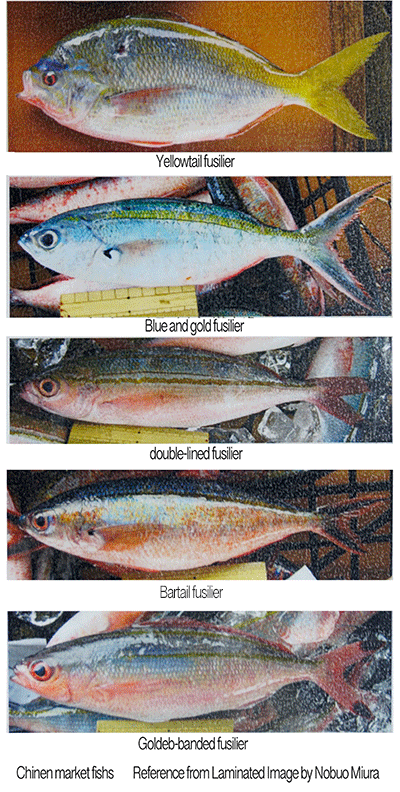
Okinawan fish book
The above laminated material is a double-sided copy of the following A3 size, and the total number of fish on 25 pages is too large to calculate.
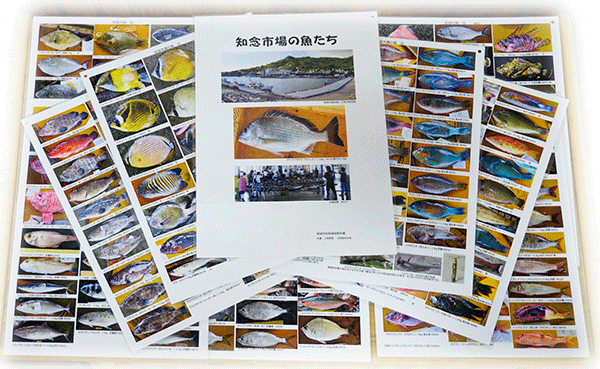
This material was created by Nobuo Miura, who lived in Okinawa. The expression of the past tense is that he died in October 2017 at the age of 70.
When I started going to Okinawa in 2008, I frequently visited the Chinen market. Then, there was a person who was eager to shoot fish caught at Chinen market and rolled on the floor, holding a camera like I did, and this person photographed fish for what purpose. I had a simple question that it might be.
As I learned later, the person who was enthusiastic about shooting fish was Mr. Nobuo Miura, a former Okinawan fisheries high school teacher, It seems to publish the book "A lot of fish in the Chinen market" as follows.
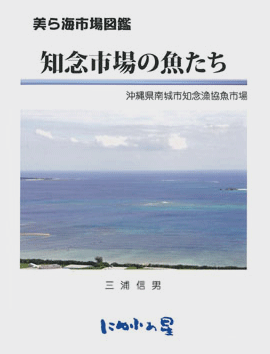
The book was published in January 2012 for 1,300 yen in color, and it took four years to sell. It is speculated that the four years since 2008 coincided with the times when I often met with the author in the Chinen market, and when I think about it now, I was thinking that I was devoted to shooting and editing. I can't get this book by searching online now.
It means that about 600 kinds of fish are landed at Chinen Fish Market. Maybe I think that Nobuo Miura was attracted to the variety of fish in the Chinen market and wanted to put together a book.
Commercialization of Gurukun sashimi
The fact that I was fascinated by the diversity of Okinawan fish is the same, but I still cannot keep up with the breadth of diversity. I have the pride that I have come into contact with countless number of fish in 22 years in Okinawa and Nansei Islands. However, even the gurukun, which is said to be Okinawa's prefectural fish, is the level at which I can see the fish at the shop where it arrives and then make another distinction. Finally, I asked the fish person in the store what it was and pretended to know it.
If the fish sales person in the shop told me that the name of Ukugurukun is Gurukun, I wouldn't have the confidence to deny it and may silently withdraw. After all, Uku Gurukun is also be accepted under the name of Gurukun... It seems that there is a region in the same image where akajugurukun in the intro image is called hiragurukun in Okinawa as well, and I would like to say which one is the correct name in Okinawa, so I simply call it gurukukun sashimi.
Below, I will introduce the process of making sashimi using yellow and blueback fusilier(akajyu gurukun).
| Gurkun figure sashimi commercialization process | |
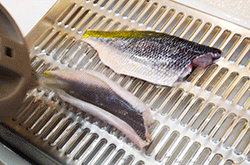 |
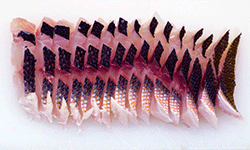 |
| 1、Remove the scales and do hot water frost the three pieces disassembling half body with the skin. | 5,Make hiratsukuri sashimi so that the length and thickness are even. |
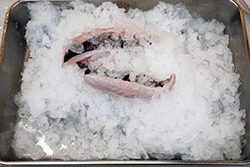 |
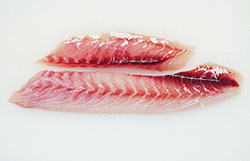 |
| 2,To prevent the hot water from raising the temperature of the fish body, wrap the front and back of the half body with crushed ice and cool it. | 6,Separately prepare a half body with the skin removed. |
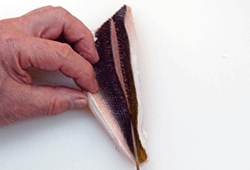 |
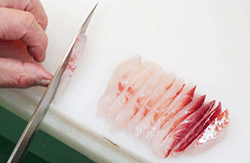 |
| 3,Put two decorative knives vertically on hot water frosted half body. | 7、Make hiratsukuri sashimi fish meat that remove the skin. |
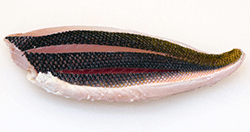 |
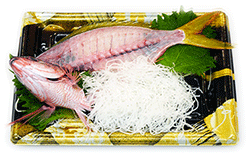 |
| 4,State with a decorative knife. | 8,Place the central bone with the head connected, and prepare the base of figure sashimi. |
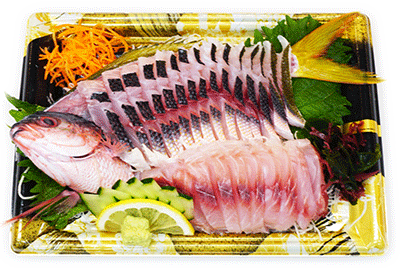 |
|
| Gurkun's figure sashimi with hot water frosted hiratsukuri sashimi and skinless hiratsukuri sashimi | |
I had a lot of self-restraint
In June, I was able to work almost as usual except for one company, but in April and May when there was only one company, I felt that the period of one month was very long. However, June has passed very quickly. It was a very fulfilling day, as I was not spending my spare time for the two months of April and May, I had to do it as my own task. But for some reason, I felt that one month seemed to be very long, probably because I was doing the same thing every day.
Even if I say the same thing, there is always a small change to the next task, not the repetition like a gear, and the behavior to overcome that task was not a little changed. However, it was a small world of my own, and the concept of "society" did not exist there.
I was able to get some idea of what the world is like by using TV, newspapers, and the internet. However, because of the limited contact points with society through my own actions, I seem to have fallen into the mood of repeating the same things in a limited closed space every day.
When I went out to the people concerned for the first time in 3 months since entering June, I felt nostalgic even just by seeing the unchanged face, and I felt that I was back in society. After all, when human beings are placed in a limited enclosed space and disconnected from society, they feel that it takes a long time, the stimuli due to changes in behavior disappear, the positive ideas do not come up, and humans are probably It seems that the brain will also atrophy.
Although the world's movements have changed significantly due to the declaration of an emergency by the new coronavirus, if people's movements seem to stop due to self-restraint like now, money will not flow and economic activity will stall, and it must rust. In the world, the livelihoods of people will be active, produce and consume to generate wealth, and the economy will move around.
Self-restraint is enough and I don't need any more. I think the time has come for people who are accumulating more or less wealth to actively consume and make money available to those who have been economically hit by self-restraint. For example, the food service industry, lodging industry, and air transportation industry seem to be in a state of dying after being hit hard, but one of the typical areas is Okinawa. Okinawa is a tourism prefecture that attracts people not only from Japan but from all over the world, and the economy based on tourism should have become a major pillar.
The prefectural governor's words, "Don't come to Okinawa..." should be withdrawn, and tourists should be flooded on Kokusai-dori in Naha City as before. As of June, more than half of the restaurants in Kumoji are still closed, and I'm w
Come to Okinawa to eat fish...
I skillfully turn the Okinawa governor's words, I want to write " come to Okinawa to eat fish" as finally.
Until February this year, not only tourists from all over Japan, but also many cruise ships from China stopped by in Okinawa, and the consumption of tourists including foreigners fueled the Okinawa economy. However, it is expected that foreign tourists can hardly expect them for the time being. Under such circumstances, the number of new coronavirus infections as of June 24 was only 1.4 in Japan, compared to 72 in the United States, 56 in Brazil, and 53 in Spain per 10,000 people. In the world, it can be said that containment of virus spread has been successful to some extent. Therefore, it is considered that the most promising tourists with a low risk of virus infection are from within Japan.
Okinawa Prefecture has continued to have zero new infections since May 1, and it should be seen that the prefecture's containment measures have been successful at this point. From this point of view, it seems that it may be decided to switch to attracting tourists.
In Okinawa Prefecture, the "Okinawa sai hatsuken campaign" was launched on June 5 for Okinawans, and it seems that the budget of 500 million yen will be used up early in June. However, I do not think this will really raise the tourism industry in Okinawa. After all, I think that the effect will be limited if Okinawa Prefecture does not attract tourists from outside the prefecture and have it drop money in Okinawa.
For example, let's send a plan such as "come to Okinawa to eat fish" to the outside of the prefecture, and subsidize travel expenses for travelers on the condition that they eat fish dishes in Okinawa. I think it's a good idea, but what do you think? I hope a great person in Okinawa read this homepage and agree that "it's interesting!"
With this project, the fisheries industry in Okinawa should be in great agreement, the food service industry, and so on, and the tourism industry should probably agree.
I've been going to Okinawa every month for as long as 13 years, and I've noticed that I've been left blank for two months this time. That is to make Okinawa feel like a second home. After all, there is a close and deep relationship in Okinawa that we have cultivated over 12 years. And that seems to have a great influence on these feelings.
In order for such close people to continue to live in Okinawa, the economy of Okinawa must continue to be healthy with tourism as the core.
| Please access the following URL if you want to secure using SSL. All pages in the site will be secure pages. |
| https://secure02.blue.shared-server.net/www.fish-food.co.jp/message english 7.2020.html |
An opinion and the communication are to iinfo@fish food times
Date of updating 1 Jul. 2020
